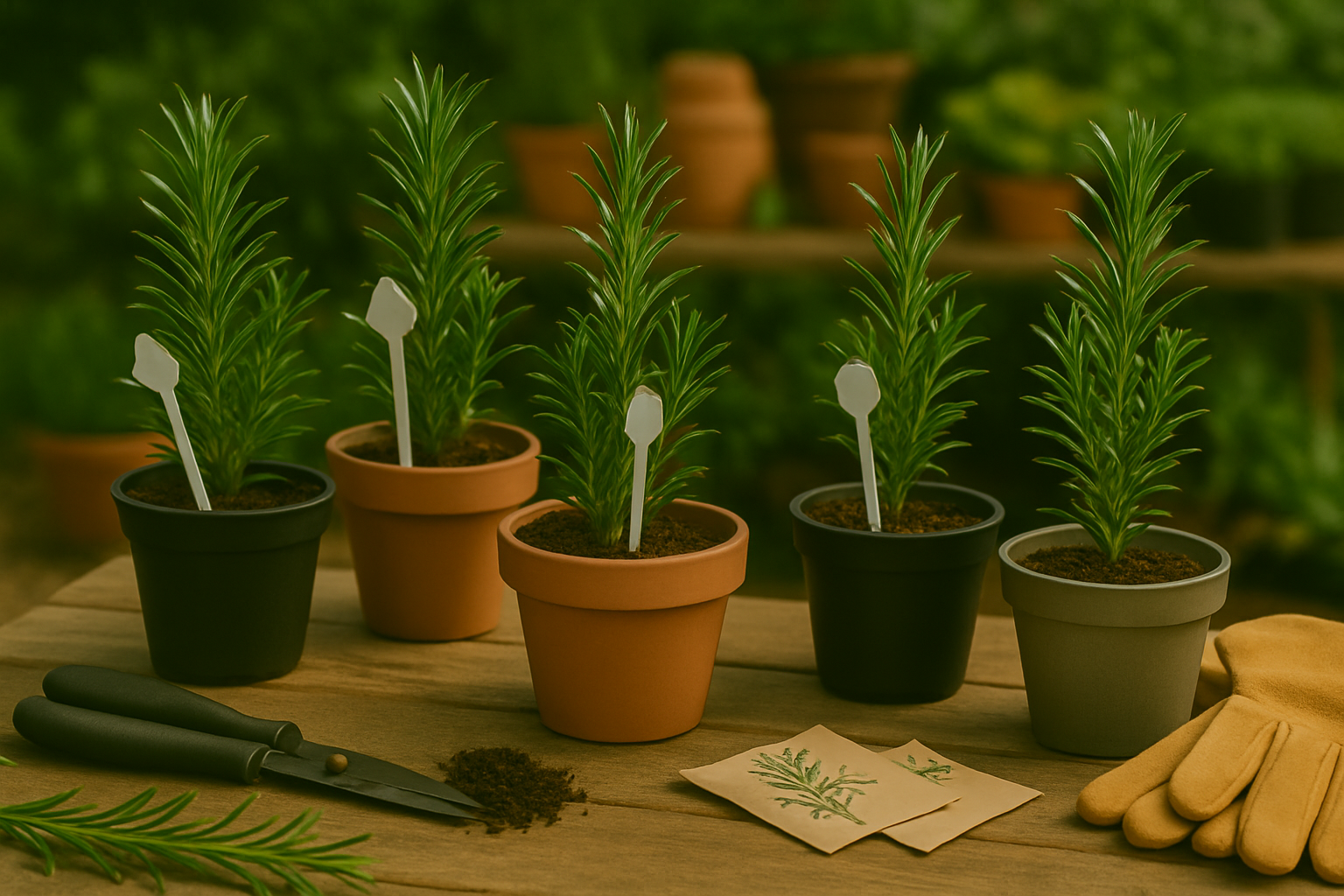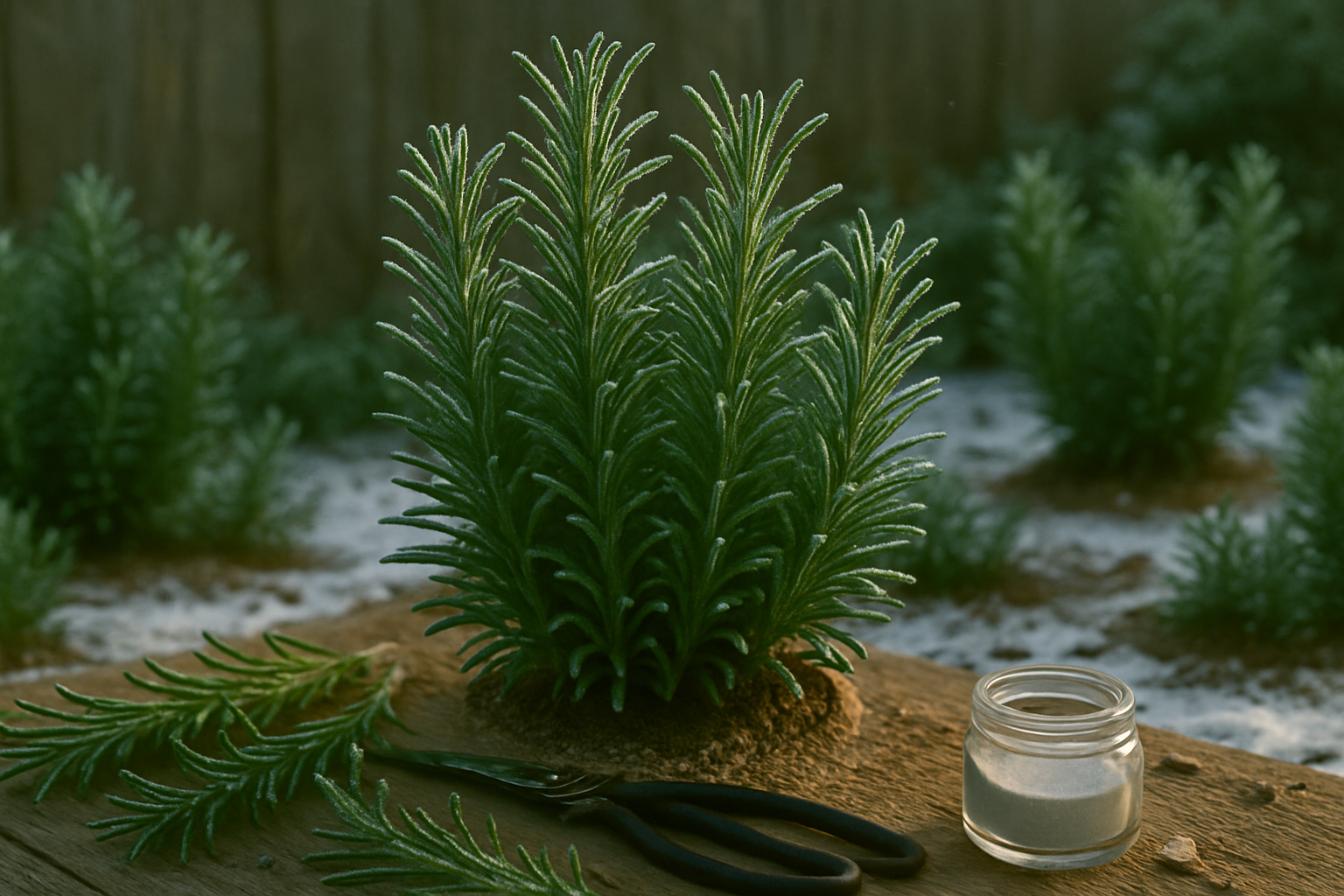Introduction
Rosemary in winter is a challenge many gardeners face, especially if you live where frosts bite and temperatures dip below freezing. While rosemary’s popularity as a fragrant, culinary herb keeps it in high demand year-round, growing it in cold climates means battling harsh weather and potentially losing your plant once the chill sets in.
If you’ve ever returned to your garden in spring only to find a brown, lifeless rosemary bush, you know how disheartening it can be. That’s why special overwintering care is crucial—simple tricks like mulching, strategic placement, or even moving pots indoors can make all the difference.
In this article, we’ll guide you through essential winter survival tips, from choosing cold-hardy varieties to protecting your plant from moisture damage and frost. Whether you’re working with a windowsill or a backyard bed, you’ll learn practical ways to keep your rosemary thriving until spring returns.
Choosing the Right Rosemary Variety

When selecting the best rosemary variety for your garden, especially in regions with cold or unpredictable weather, it’s important to choose cultivars bred for resilience. Not all rosemary plants tolerate frost; common garden rosemary (Rosmarinus officinalis) thrives in USDA zones 8-10 but struggles in winters below 20°F.
For colder zones (6-7), opt for cold-hardy types like ‘Arp’, ‘Hill Hardy’, or ‘Madeline Hill’, which can survive brief freezes and recover well in spring. These cultivars have become popular among gardeners for their adaptability and improved winter resistance compared to standard varieties.
Plant rosemary in a sheltered, sunny spot with well-drained soil—mulching around the base can help insulate roots during a cold snap. Consider buying plants from reputable nurseries, such as local garden centers or respected online sources like High Country Gardens or Annie’s Annuals, which specialize in region-suited varieties.
If you’re starting with seeds, keep in mind they may not always grow true to type, so cuttings or starter plants from trustworthy suppliers are your best bet for reliable winter hardiness. With the right variety and care, even gardeners in challenging climates can enjoy thriving, aromatic rosemary year-round.
Preparing Rosemary for Winter Outdoors
Getting rosemary ready for winter outdoors starts well before the first frost arrives. First, make sure your soil drains quickly—rosemary hates wet roots in winter. Work some coarse sand or fine gravel into the top 6-8 inches of soil to boost drainage. Planting in a slightly raised bed or on a slope helps water run off, reducing the risk of root rot when heavy rains hit.
Look for a protected outdoor spot, like the base of a south-facing wall or a sheltered corner; these locations absorb and hold warmth, providing natural insulation and shielding your rosemary from cold winds.
Before the deep chill sets in, apply a thick, three- to four-inch mulch layer around the base of each plant. Use straw, pine needles, or dry shredded leaves—just avoid piling mulch right against the stems, which can lead to rot. Mulch insulates the soil and keeps root temperatures stable through the freeze-thaw cycles common in winter.
About six to eight weeks before the average first frost, stop fertilizing to slow leafy growth, nudging your rosemary toward winter dormancy. Also, gradually reduce watering as temperatures drop; overly moist soil increases the risk of fungal issues and can damage tender roots.
These simple, proactive steps give your rosemary the best fighting chance to survive—and even thrive—through a tough winter outdoors.
Overwintering Rosemary Indoors

In cold climates, overwintering rosemary indoors is often the best way to ensure your plant survives harsh winter temperatures that can quickly damage or kill this tender Mediterranean herb. Rosemary is not frost tolerant, and a single hard freeze can wipe out even mature plants.
To bring your rosemary inside, start before your first expected frost—usually early to mid-fall. Carefully dig up the plant, trying to keep as much of the root ball intact as possible. Plant it in a container a couple of inches wider than the root mass, using well-draining potting mix, and water thoroughly.
Acclimate your rosemary by placing it in a sheltered spot outside, like a covered porch, for a week to adjust to the move. Then, transition it indoors to a bright, sunny windowsill—south-facing is ideal. Rosemary thrives with at least six hours of direct sunlight daily, but if natural light is limited, supplement with a grow light.
Keep room temperatures between 55-65°F, and avoid drafts or placing your plant near heating vents, which can dry it out. Indoor air is often dry in winter, so boost humidity by misting the leaves, setting the pot on a tray of water-filled pebbles, or running a nearby humidifier.
Water sparingly—allow the top inch of soil to dry out before watering, as rosemary dislikes soggy roots and is prone to root rot. Regularly snip off leggy stems to encourage bushier growth and remove any dead or yellowing leaves.
Keep an eye out for common indoor pests such as spider mites and aphids. Use insecticidal soap or a strong shower of water at the first sign of infestation. Monitoring closely and following these steps will help your rosemary thrive indoors until it’s safe to return it to the garden in spring.
Winter Rosemary Care Tips (Indoor & Outdoor)
Caring for rosemary during winter requires a bit of extra attention, especially since this hardy herb can be sensitive to cold snaps and dry indoor air. Whether your plant stays outdoors or moves inside, proper watering is key—water only when the top inch of soil feels dry, as rosemary dislikes soggy roots.
Indoors, the dry air from heaters can stress the plant, so boost humidity by placing a tray of pebbles and water beneath the pot or grouping herbs together. If you notice yellowing leaves or dropping needles, it’s likely a sign of stress due to inconsistent moisture or low humidity; trim back any affected areas and make sure the plant receives plenty of indirect sunlight.
Outdoor Care in Colder Climates
For outdoor rosemary in colder climates, simple DIY frost protection methods work well. Use a cold frame, prop an old glass window over the plant, or loosely wrap the bush with burlap to shield it from icy winds. If a severe cold snap is expected, mound mulch around the base to provide extra insulation.
Transitioning Back Outdoors in Spring
When spring arrives and the danger of frost has passed (usually after your area’s last expected frost date), gradually reintroduce rosemary to the outdoors over a week or two. Start by placing it outside in a sheltered, partially sunny spot for a few hours each day, slowly increasing the time and sunlight exposure until it’s ready to stay out full-time.
With a little ongoing care, your rosemary will stay vibrant all winter and bounce back stronger with the warmer weather.
Common Questions About Rosemary in Cold Climates
Many gardeners in chilly regions wonder if rosemary can survive the snow. The short answer is: usually not without protection. Rosemary is only reliably hardy in USDA zones 8 and above—meaning most varieties won’t survive harsh winters or multiple freezes unprotected. It’s a common myth that all rosemary can tough it out in snow, but unless you’re growing a variety like ‘Arp’ or ‘Hill Hardy,’ you’ll need to take precautions.
For best results, start hardening off your rosemary plants a few weeks before the first frost by gradually exposing them to cooler temperatures during the day and bringing them indoors at night. If you’re keeping rosemary outside, mulch heavily around the base and try covering the plant with frost cloth during cold snaps.
Alternatively, many cold climate gardeners treat rosemary as a potted herb, bringing it inside for winter—just make sure your plant gets plenty of sun and avoid overwatering.
If you’re new to growing rosemary in northern zones, check with your local extension office or online forums like the Herb Society of America for tailored advice and support. Reliable resources like university extension websites can also offer region-specific tips to boost your rosemary’s chances of surviving the cold.
Conclusion & Further Resources
Keeping rosemary alive through the winter comes down to choosing the right variety, protecting the roots from the cold, and providing just enough water. Be patient—every garden is different, and it may take a few tries to find what works best in your climate. Don’t be afraid to experiment with mulching, indoor growing, or using cloches.
For more in-depth advice, check out The Winter Harvest Handbook by Eliot Coleman or explore the Old Farmer’s Almanac website. Joining forums like GardenWeb or local Facebook gardening groups can also connect you with seasoned growers for tailored tips and encouragement.
